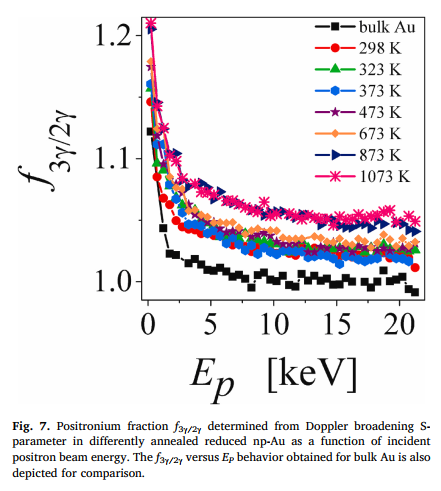The values for f3γ/2γf3γ/2γ in Figure 7 exceed 1, which is physically impossible for a “fraction”. Can you explain this discrepancy? Did you mistakenly plot the 3γ/2γ ratio instead of the true positronium fraction?
The formula f3γ/2γ=(T−P)/Pf3γ/2γ=(T−P)/P does not yield a normalized fraction but rather a ratio that can exceed unity. What is the justification for using this specific formula to represent a “fraction,” and how does it relate to the actual probability of positronium formation per incident positron?
Since the core argument for positrons diffusing to surfaces rests on the increasing trend of this “fraction”, and the metric itself is fundamentally mischaracterized, how can we trust any of the quantitative conclusions drawn from the positronium data?


